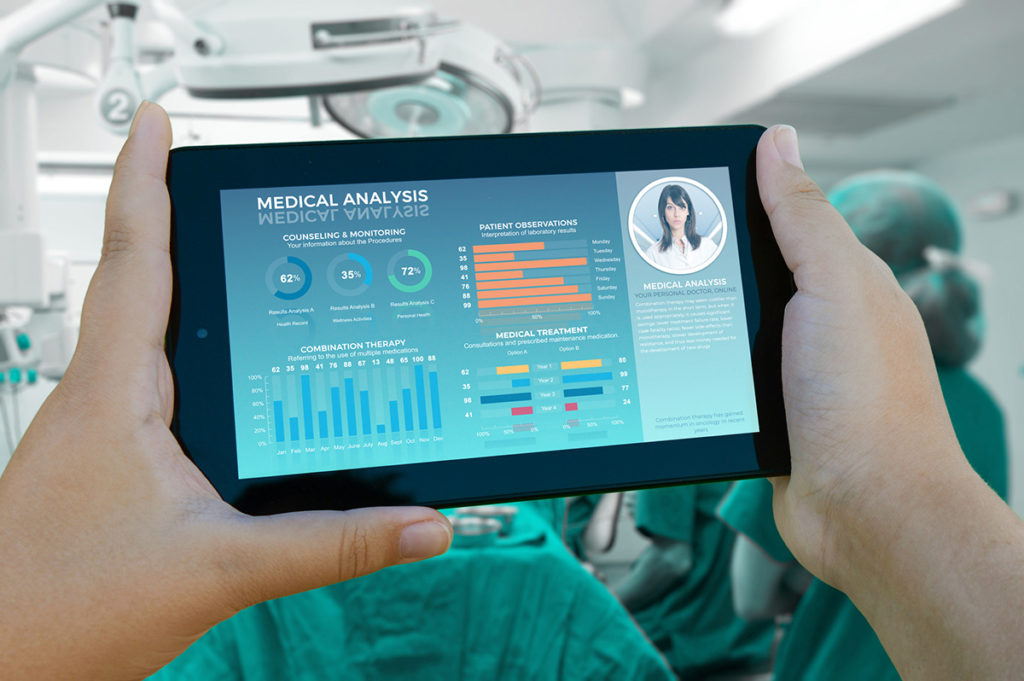
In the beginning of 2022, Health Catalyst Chief Product Officer Anne Marie Bickmore marked this year “the year of the user.”
To facilitate outcome improvements in line with the user’s frame of mind, the Health Catalyst User Experience Team is focusing on the care journey from a medical staff member’s perspective, seeking to understand the unique challenges clinicians face, and elevate our products to better match caregiver workflows.
Improving the Reporting Process
Adverse events – unexpected medical problems that happen during or after treatment with a drug or other therapy – cause 250,000 deaths per year according to a study by Johns Hopkins University. These events are tracked through voluntary event reporting.
However, adverse events – such as if a patient should fall or had a bad reaction to a medication – are underreported. The Office of Inspector General found in a 2012 study that 86 percent of patient harm events were not reported to an incident reporting system. One reason highlighted in previous explanations for low reporting levels was that staff members didn’t have time, and the traditional voluntary reporting process is lengthy and time consuming. The Health Catalyst UX team is working to tackle this challenge by improving the reporting process experience.
By making design more user friendly, the team aims to reduce the process of filling out an incident report from 30 minutes to five minutes.
Through cross-team collaboration, Health Catalyst is not only looking to reduce the time it takes to fill out a report, but also, using predictive analytics, inform how hospitals and health systems utilize data from the reporting submissions to improve patient care and prevent potential adverse events.
These advancements will detect harm based on the data that can be extracted through Health Catalyst’s Data Operating System (DOS™) Platform and lead to improved insights.
When using triggers of the Patient Safety Monitor™ (PSM) tool to supplement the voluntary reporting process, Allina Health, a pilot site for the technology, was able to identify 333 additional events that were not in the original voluntary reporting tool.
Breaking Down Data Silos
Compiling all the necessary information a clinician needs in one place is another UX area of improvement.
According to Health Catalyst’s Senior Vice President of Patient Safety Products Stan Pestotnik, one of the biggest UX issues, as it relates to patient safety, is that clinicians must be hunters and gatherers of data.
Siloed systems are cumbersome and force users to discover patient safety patterns on their own. DOS has the power to ingest data from across systems, so data is liberated and presented in a more meaningful, accessible, and digestible way.
The clinical users at Hospital Sisters Health Systems found the single source of truth provided by the DOS platform and PSM tool helped staff members save time.
Visualizing Data
Compiled data must be displayed in the most accessible way to effectively improve the clinician experience.
“When we build tools in the patient safety space, it's critical to have an actual design discipline represented in the build out of that software,” Alejo Jumat, Senior User Experience Designer said. “How the information is displayed to the end user effects how it is consumed. In general, when we build healthcare information technology products that have a visual component, UX design practitioners are a strategic part of that development work.”
Many healthcare IT products suffer from poor design and usability. Basic design principles are violated repeatedly: visual hierarchy, typography, use of color, use of white space – obstructing the user’s consumption of information.
One design rule that was top-of-mind when creating PSM, was the principle of simplicity – displaying the correct information, absent of clutter, when the user needs it. You can see this design principle play out on PSM’s dashboard. The dashboard focuses first on displaying the top five adverse events, where are those events are happening, and their severity.
In healthcare, improved UX is not only time-saved, but also the opportunity to help clinicians better understand the patterns of harm so they can prevent future adverse events and improve patient safety and care outcomes.

